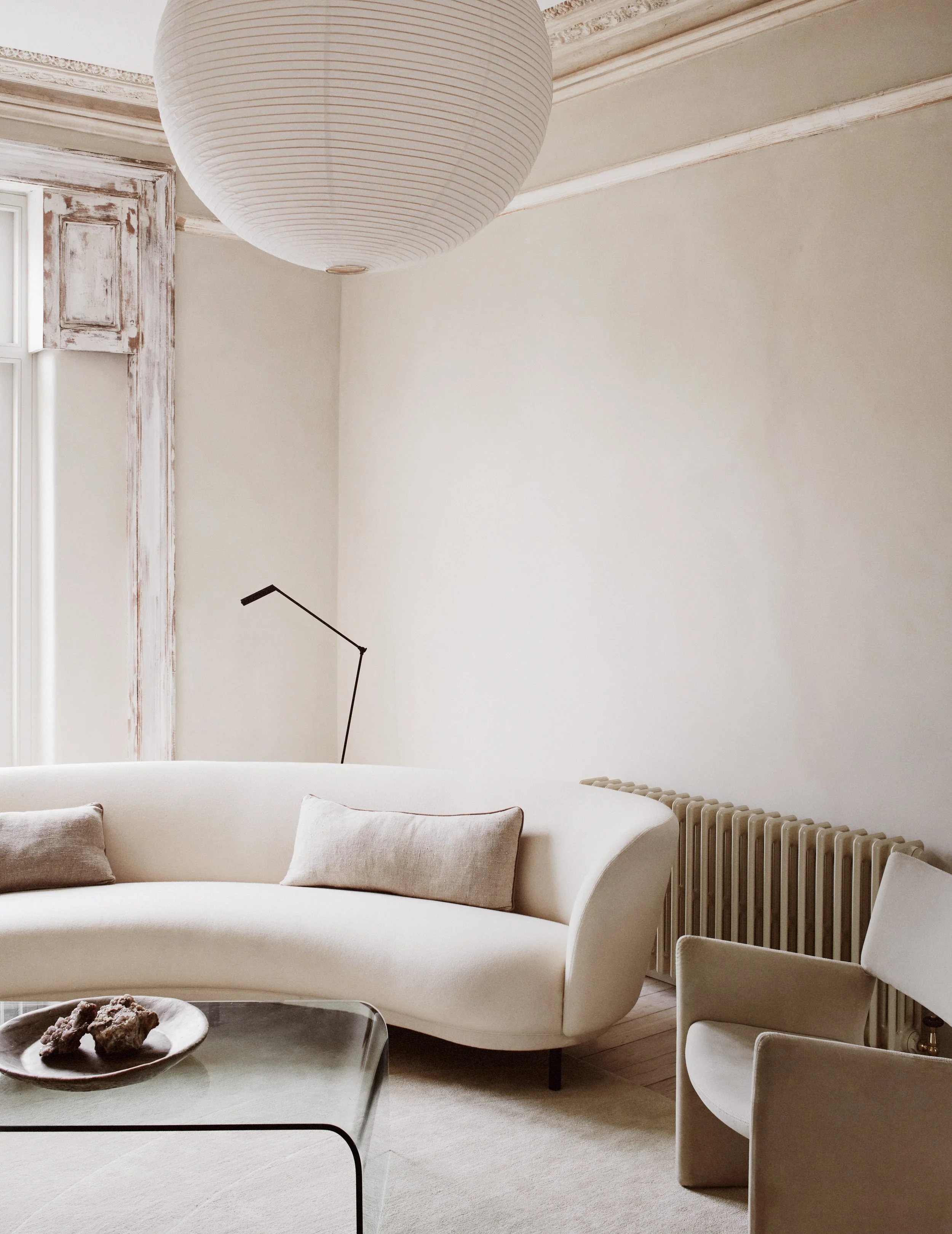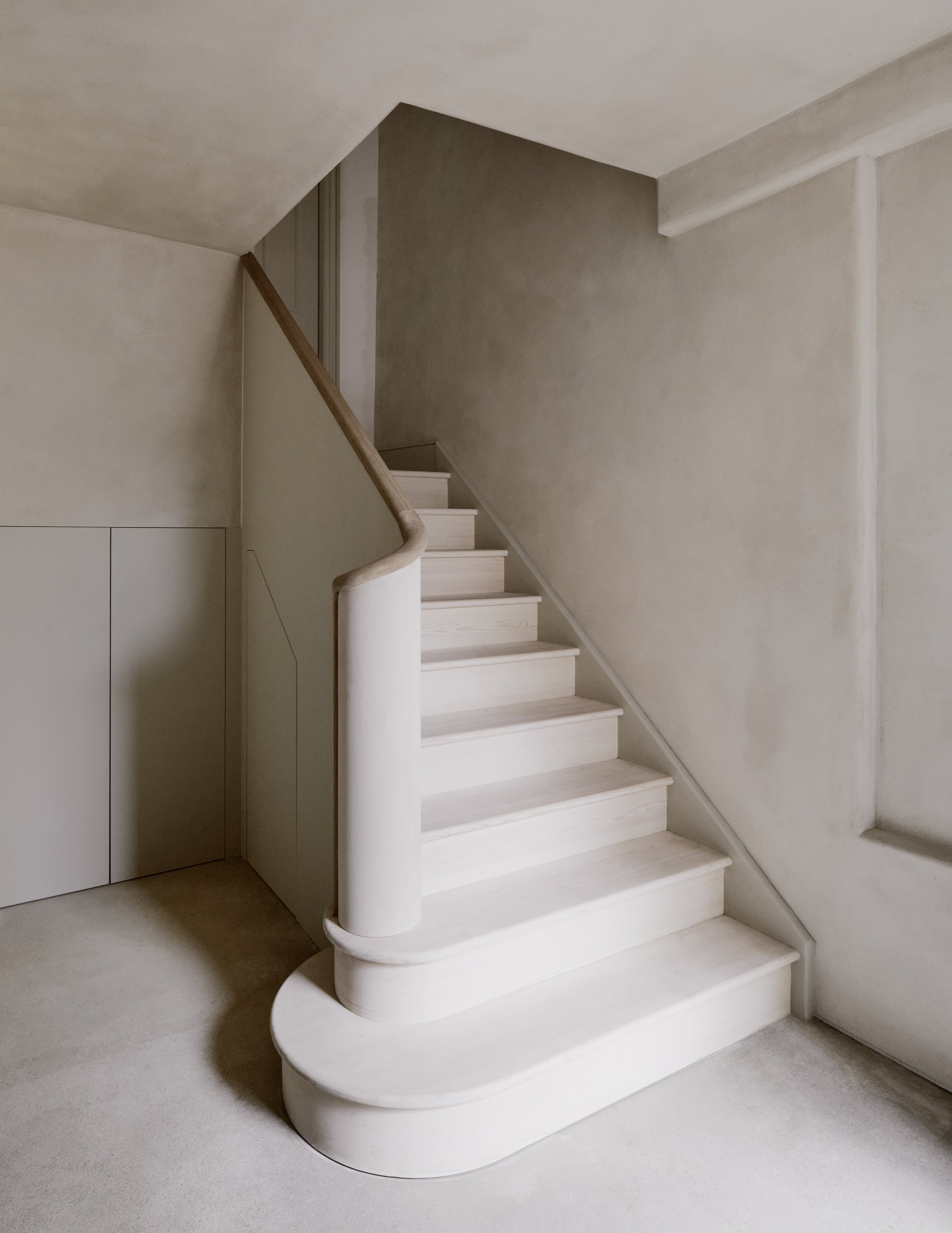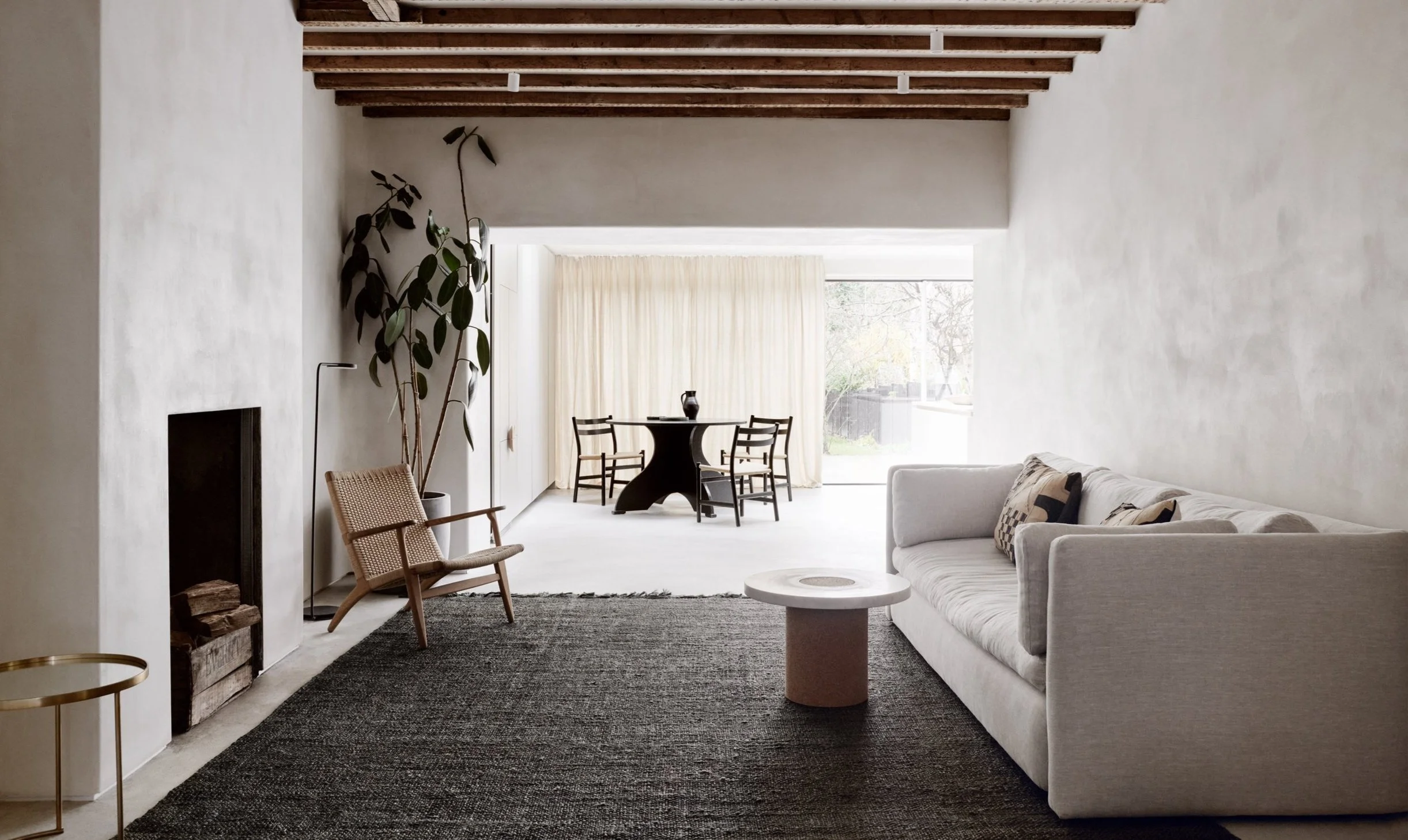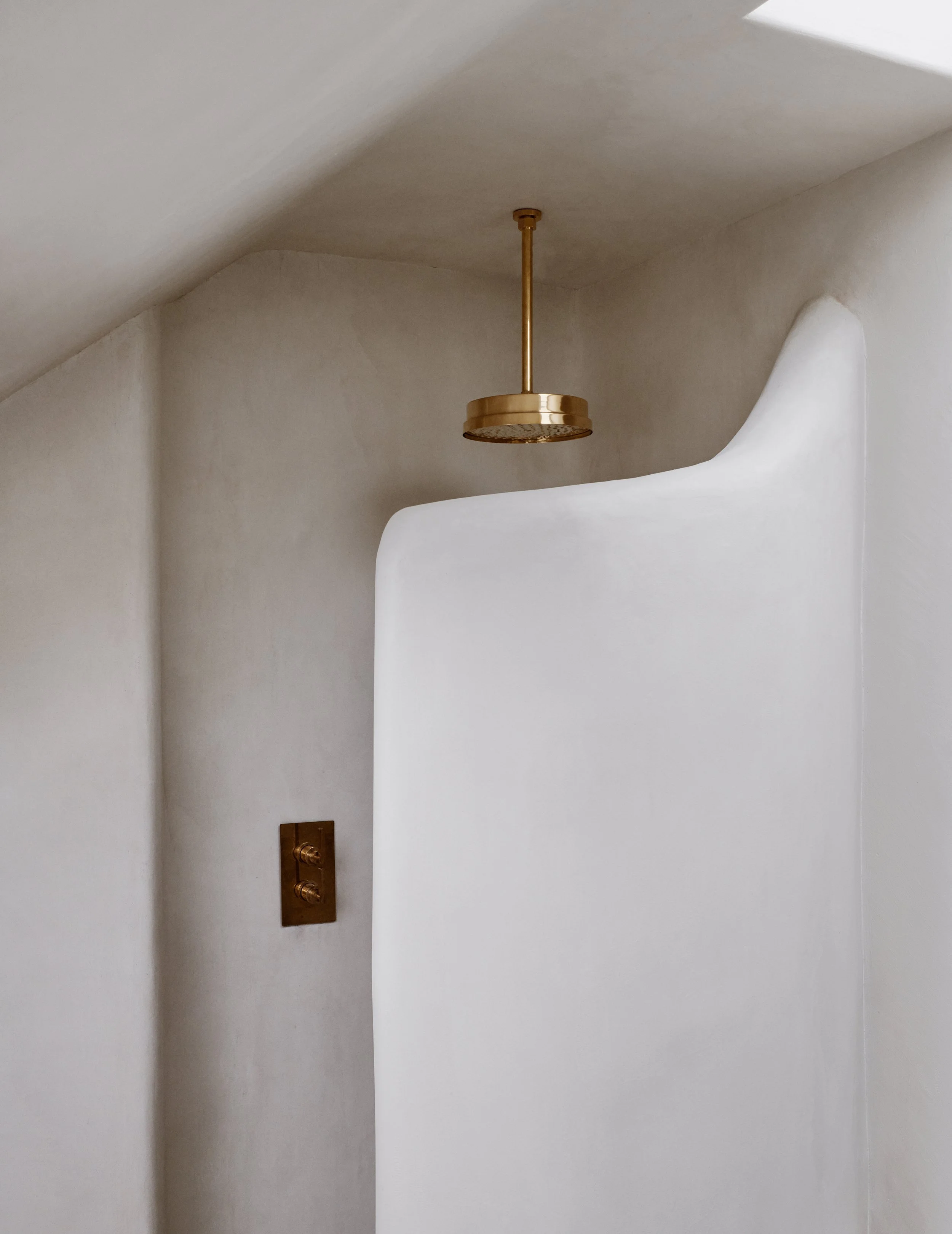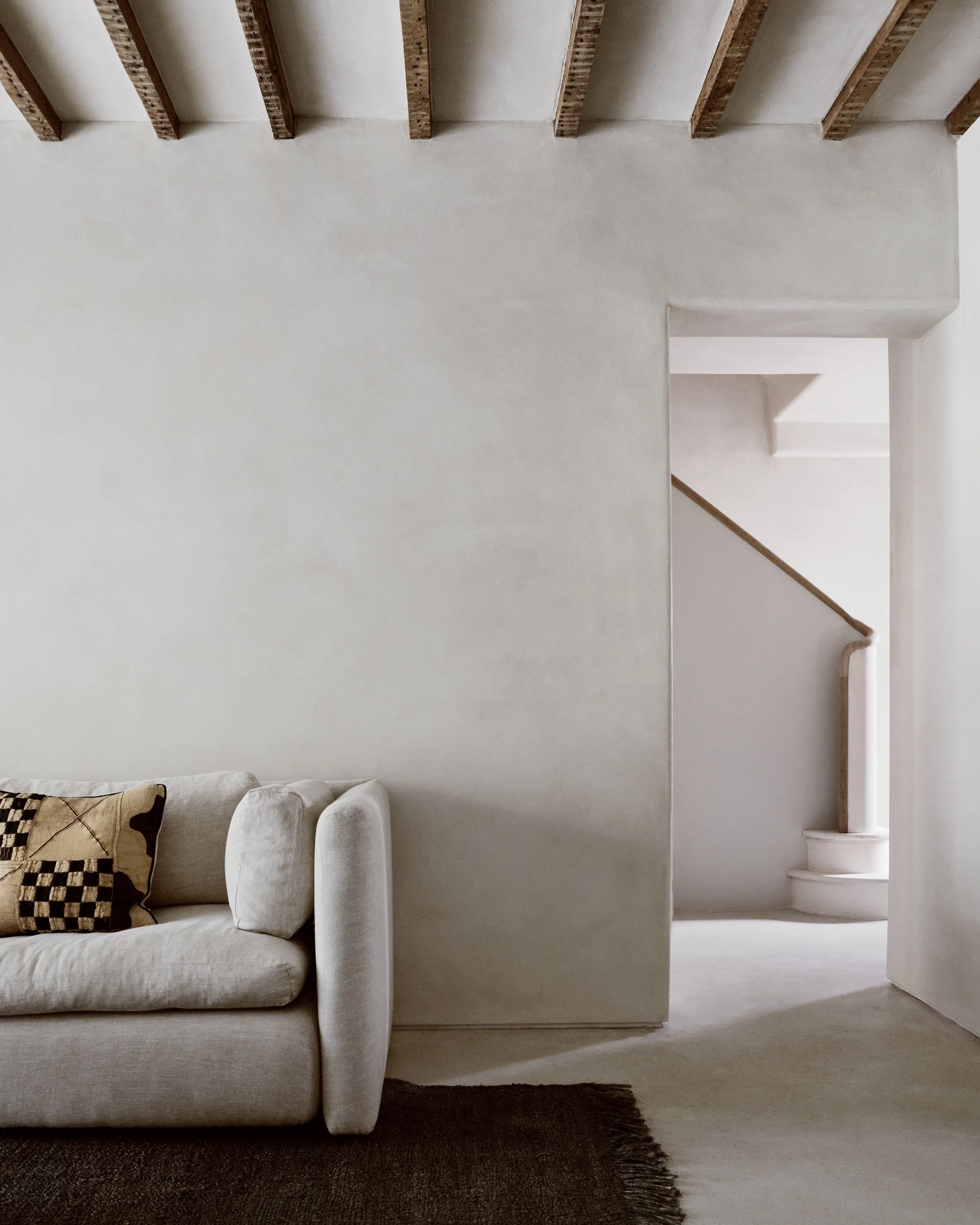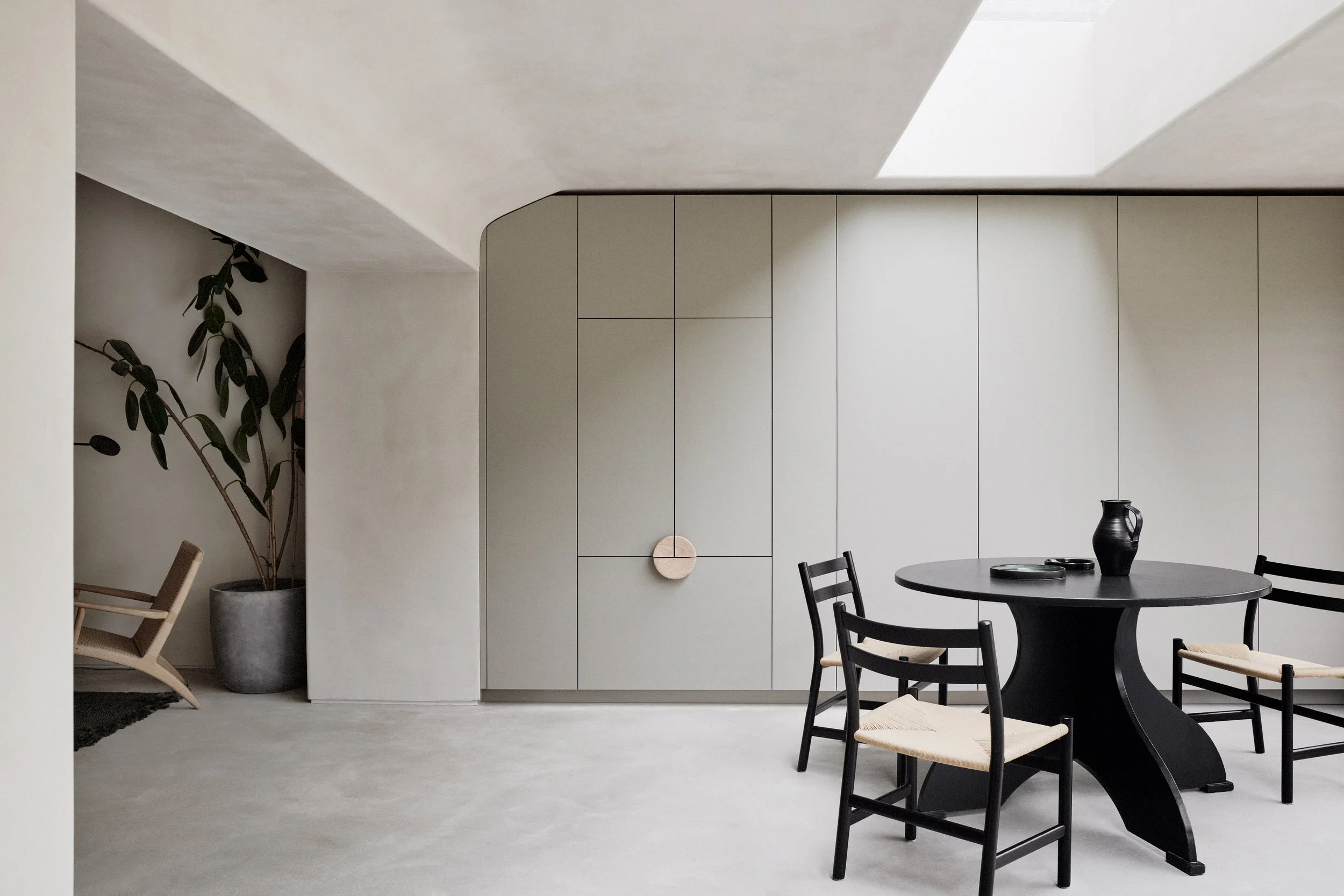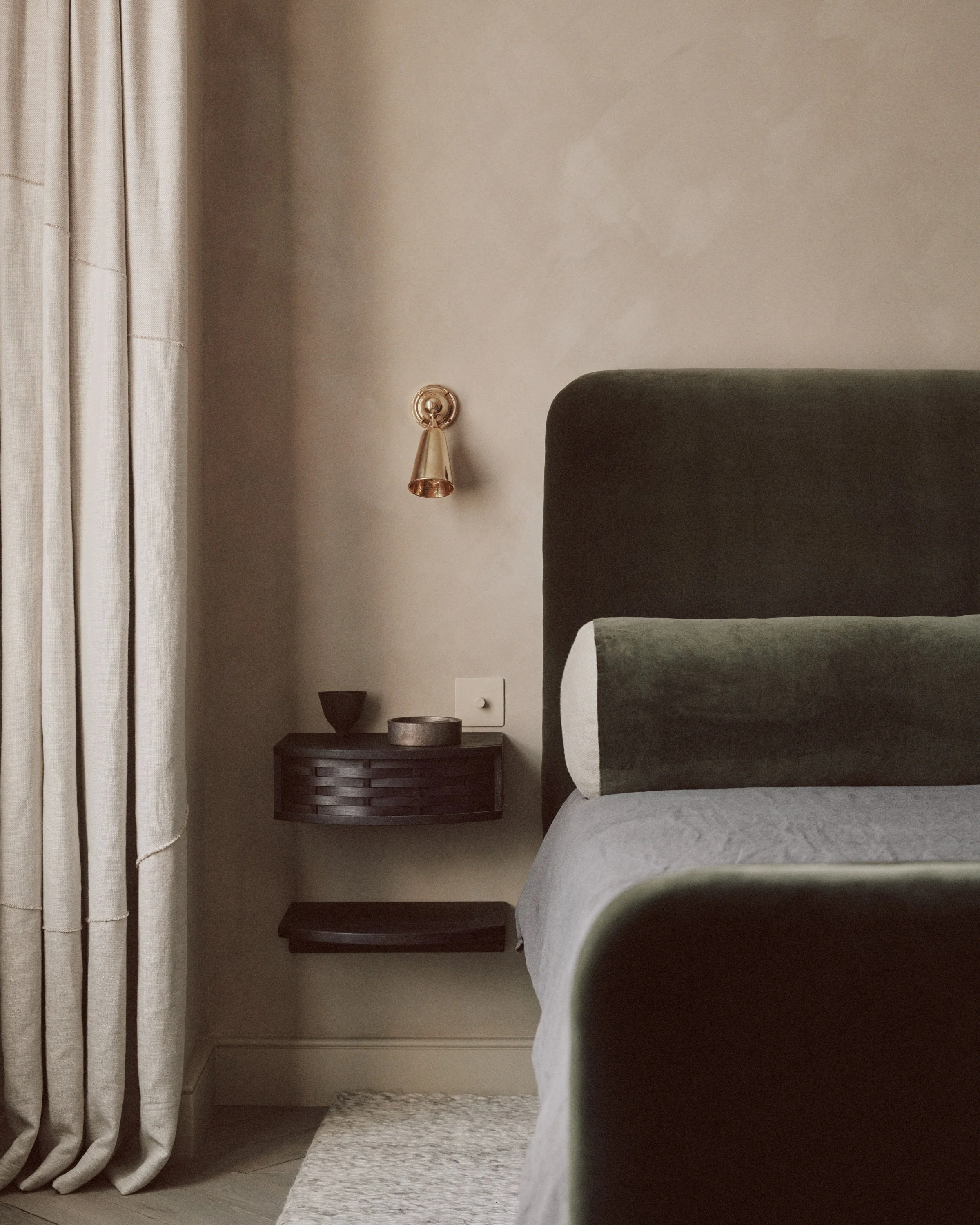Louisa Grey from House of Grey
Louisa Grey is the founder of British interior design studio, House of Grey—a design firm passionate about designing spaces that leave a positive design legacy for generations to come. Here she talks about the value of traditional styles of living, creating interiors that have minimal impact on the environment and much more.
Photography: Michael Sinclair & Edvinas Bruzas
Home of Holism— Louisa Grey’s personal home and work space, in north London. Photo: Michael Sinclair
Louisa Grey, founder of House of Grey. Photo: Michael Sinclair
The beautiful staircase at Home of Holism. Photo: Michael Sinclair
Considered details at Home of Holism. Photo: Michael Sinclair
‘Home of Holism was a passion project from the start and it allowed us as a studio to create a space that truly embodies all of our design principles without any limitations.,’ says Louisa Grey. Photo: Michael Sinclair
Hello Louisa—do you remember when design and interiors first made an impact on you?
Louisa: I grew up in a creative household, both my parents were makers and extremely innovative in their thinking, my mother is a painter and was a knitwear designer and weaver, my father instead restored buildings and in his spare time made stained glass windows and designed and built furniture. As a result of my father’s work, I have grown up in very interesting spaces that he converted himself: a baptist church, a public house and a 15th century barn. I think when you are used to living in these sorts of spaces which have been reimagined and repurposed for family life, it’s impossible not to want to explore the idea of where and how we live further.
How did you first land a role as an interior designer?
I studied textile design at the Chelsea College of Art and following on from my studies I started working as an interior stylist on photoshoots and it really started to grow from there. I founded the Interior Design Studio, House of Grey, in 2013 when I was pregnant with my son, I had designed two restaurants and a private residential home and I felt there was another way to design and build in a more positive way, one which had less of an impact on the earth and offered health benefits for its inhabitants. I knew their was a way to design positively and set about creating our own ecosystem which would show that creatively.
A ‘typical’ day at work involves...
A ‘typical’ day is hard to define. We are a creative team who collaborate closely to work towards our collective vision of purposeful design. I love personally being involved on all elements of the business and every project from conception through to completion, and my working days reflect this. So no day is the same. I work on all elements of the business from signing off on the inspiration boards for new projects, meeting with clients to discuss a project’s progress to personally installing, styling and art directing the photoshoot for a new space. I’m in my element and feel most joyous and alive when focused on thinking about the details on an interior design project.
What/who influences your work most?
So many things from different areas of life: fashion, nature, materials. I would say that something which doesn’t influence our work are trends. Our products and interiors are focused on longevity and creating a design legacy beyond our own parameters, this is underlined by the products we use, sourcing and making pieces that will not only last a lifetime but that are crafted so they can be passed on from generation to generation.
What’s been the most memorable interior project you’ve worked on at House of Grey?
I would have to say Home of Holism - my personal home and work space in north London. We had been pitching for hotel projects, which would show how we should be living, creating and designing the spaces we reside in and these had been unsuccessful so I thought I would do it myself. Whilst this happened the pandemic happened and then there was a huge shift in how people approached construction and design.
It was a passion project from the start and it allowed us as a studio to create a space that truly embodies all of our design principles without any limitations. It was also the perfect opportunity for us to be able to show and inform our clients, in a knowledge based way, what materials are available on the market, including non-visible elements such as insulation.
Most people are used to perfection with acrylic-based paints, whereas natural materials come with imperfections and change over time, we wanted to be able to show this to clients and it is an evolving portfolio, which shows how products wear.
‘I’m in my element and feel most joyous and alive when focused on thinking about the details on an interior design project,’ say Louisa Grey. Photo: Michael Sinclair
The bedroom at Home of Holism. Photo: Michael Sinclair
Design details in the bathroom space at Home of Holism. Photo: Michael Sinclair
Home of Holism by House of Grey. Photo: Michael Sinclair
‘Most people are used to perfection with acrylic-based paints, whereas natural materials come with imperfections and change over time, we wanted to be able to show this to clients and it is an evolving portfolio, which shows how products wear.’ Photo: Michael Sinclair
“Our products and interiors are focused on longevity and creating a design legacy beyond our own parameters, this is underlined by the products we use, sourcing and making pieces that will not only last a lifetime but that are crafted so they can be passed on from generation to generation.”
Ffern store design by House of Grey. Ffern store design by House of Grey.Photo: Edvinas Bruzas
Ffern store design by House of Grey. Photo: Edvinas Bruzas
Bathroom details at North London Townhouse by House of Grey. Photo: Michael Sinclair
The bedroom at North London Townhouse. Photo: Michael Sinclair
Interior landscapes that have inherent health benefits and minimal impact on the environment are a focus at House of Grey, why is this so important for you personally?
As mentioned, the studio was founded when I was pregnant with my son, I had had issues conceiving and this led me on a natural path of acupuncture, Chinese herbs and a realisation that the old, traditional ways of living should be the new way of living – simple, healthy and free of chemicals, toxins and pollutants.
At House of Grey we holistically fuse the features and principles of Salutogenic Design with the aims of Circular Design, to create unique, personal environments which actively promote human health and have a positive impact on the planet, we call this Circular Salutogenic Design® (CSD).
Our CSD work embraces the notion of regenerative design and development, which is the process of building capability in people within communities, and capacity within natural systems to renew, evolve, and thrive. Regenerative design is holistic. Instead of primarily focusing on solving or minimising humans’ negative impacts, through developing our CSD products and interiors, we create ways for humans to enhance and contribute to thriving, living systems across the globe.
The most rewarding part of your job is...
Seeing a project come together, it’s why I love being involved on the installation of our projects, as do all of our designers. It’s important for designers to see the culmination of their hard work, the final outcome before the space is handed over to the client and its inhabitants. It’s the all-important creative crescendo, seeing our vision become reality.
And the most challenging aspect of your job…
I would say it’s challenging people’s mindset. It is people’s habitual approach to making, doing and consuming combined with not investing the time to make the changes in processes which is the biggest issue and it completely within our collective power to do something about it – but it requires a huge amount of passion for people to be motivated to make these crucial changes.
The most valuable piece of advice you would give to emerging interior designers looking to break into the industry is...
Trust your intuition and never question it. Work somewhere where you love the aesthetic and philosophy so that you work with integrity, allowing you to expand within your life.
What do you believe to be the definition of ‘home’?
For me it’s a feeling, one of comfort and contentment. One where you can self-regulate and download the day.
What does it mean to be an interior designer in the current UK interiors and design landscape?
For the UK (and global) design community, our next steps are no longer about maintaining what is, it is about restoring something to what it was, it’s about creating the opportunity and circumstances for increasing states of health and vitality for everyone in an ecosystem. Where ecological, social, and economic systems are symbiotic and relate in ways that elevate individual and collective vitality, they can grow yet more opportunities for positive impact. Instead of primarily focusing on mitigating humans’ negative impacts, we instead envision and create living environments that are thriving, healthy, and resilient. Currently, most sustainability efforts to be ‘greener’ tend to focus on minimising negative environmental and social impacts. This fundamental shift in perspective is the first, and most important, step in creating a vision for a future that will actually have an ongoing positive impact on humanity and the earth, rather than neutralising the negative side effects of consumerism.
The best lesson you’ve learnt working in interiors?
Always go to clients with solutions not problems. Innovate and think out of the box and make sure to consider the longevity of the space - don’t just look at the short term life of the space.
What’s coming up for House of Grey—what are you most excited about?
We’re currently working on an in-kind project for The Whittington Hospital in north London where we are creating three spaces to provide patients and staff with nurturing and healthy environments - it’s a project that will have a lasting, positive impact for generations of babies, mothers and elderly people for years to come and as it’s local, it’s extremely close to my heart - I really appreciate the NHS for all that it does. My vision for House of Grey is design which enhances human life and this is exactly what this project is seeking to do.
We also have another couple of dream projects in the pipeline... so please keep an eye on our Instagram for the launches of these.



